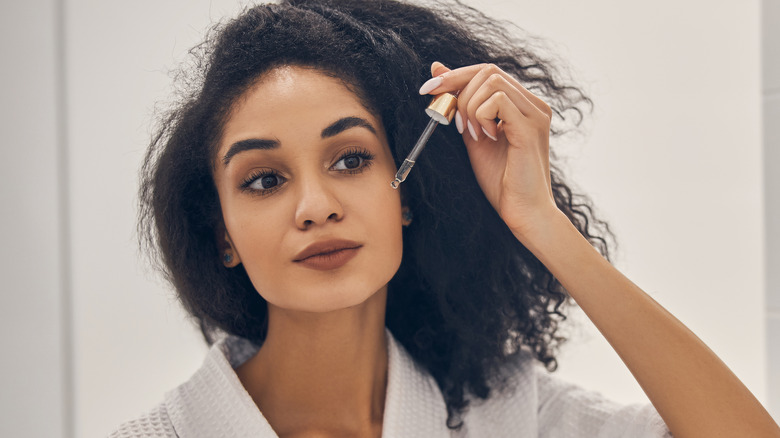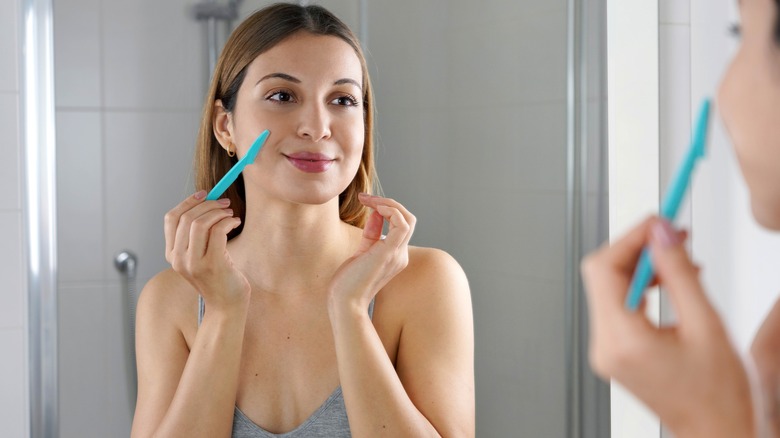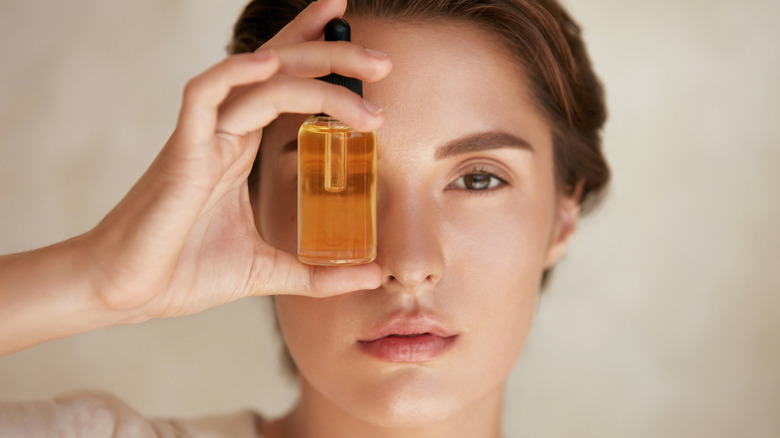What To Know About The Buzzy Oilplaning Skincare Trend
If you haven't started shaving your face yet, you might consider it now. Skincare fans have increasingly been turning to dermaplaning lately, a procedure where the top layer of skin and hair on the face is shaved away (per Cleveland Clinic). During a dermaplaning session, a dermatologist uses a medical razor called a dermatome, though a similar effect can be achieved at home using a face razor. Removing facial peach fuzz may seem like an unnecessary extra step in your routine, but experts claim it's worth it.
"Dermaplaning's purpose is to give your skin an immediate exfoliation for a luminous glow that lasts a week," Dr. Stafford Broumand, a plastic surgeon and Associate Clinical Professor of Plastic Surgery, informed Byrdie. "The benefits are dewy skin, faster cell turnover, and a smoother texture." HealthShots also explains that skincare and makeup products will absorb better after dermaplaning, giving your face a naturally airbrushed finish.
However, there are some drawbacks worth noting. Swiping a razor along your face, whether at home or in a salon, could lead to infections, acne, and dryness, as Healthline warns. These side effects are especially common in people who already deal with sensitive, acne-prone skin. But oilplaning, an alternative to traditional dermaplaning, could be a game-changer for those who wish to dermaplane but are wary of possible skin irritation.
What is oilplaning?
Dermaplaning may be a no-go for some skin types, but adding oil into the mix — appropriately dubbed "oilplaning" — makes the beauty trend accessible to more people. Meagan Carboney, co-founder of women's razor brand Jill, demonstrated the oilplaning technique in a recent TikTok video. First, she wipes a thin layer of facial oil across her face. Then, Carboney uses a razor to carefully shave her face, exfoliating the surface and wicking away fuzz.
Prepping your face with an oil first creates a buffer between the razor and the skin — similar to using shaving cream when shaving your legs, as dermatologist Dr. Hadley King told The Zoe Report. That means, generally, people with sensitive or easily irritated skin types can still reap the benefits of dermaplaning, without worrying about flaking and redness the next day.
However, Wing It Cosmetics notes that people with inflammatory skin conditions such as acne and eczema should still avoid shaving irritated areas of skin, even after prepping with oil.
How to oilplane the right way
The standard way to oilplane your face is to apply oil before shaving away the top layer of skin and hair. However, you can also apply oil after shaving instead for a soothing effect, according to Glamour. Either way, be careful not to overdo it. Skin revision therapist Cassi Dambrogio clarified with Bustle that oilplaning once every two or three weeks is more than enough, though it can vary based on how quickly your hair grows.
The oils you use will depend on your skin concerns, but Wing It Cosmetics suggests choosing oils that are natural, fragrance-free, non-comedogenic, and most importantly hydrating. If you're not sure where to start, try squalane, rosehip, jojoba, or hemp seed oils. And if you're new to dermaplaning, get the technique right by gently pulling the skin taut with one hand while shaving in small, downward strokes with the other, per The Zoe Report.
Finish off by gently washing your face and slathering on a nourishing moisturizer. And keep in mind that oilplaning is a form of exfoliation, so go easy on other harsh exfoliating products for a few days to allow your skin time to recover.


